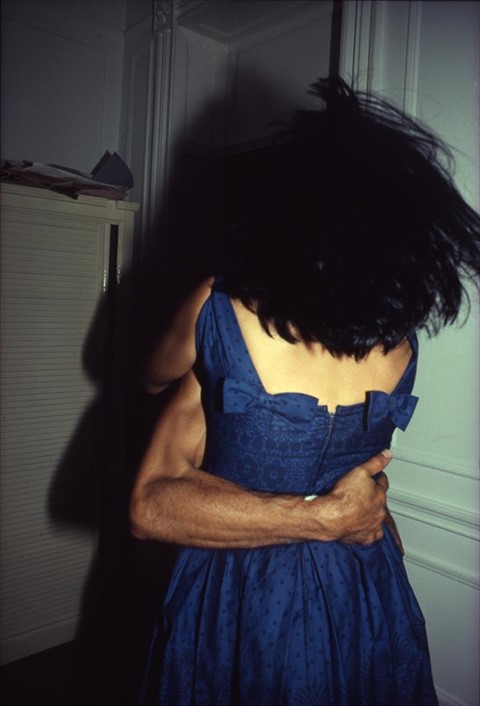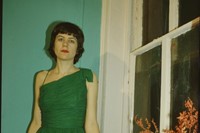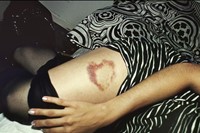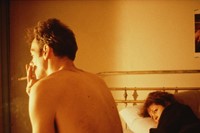“These pictures may be an invitation to my world, but they were taken so that I could see the people in them. I sometimes don't know how I feel about someone until I take his or her picture. I don't select people in order to photograph them; I
Nan Goldin, from the intro to The Ballad of Sexual Dependency, 1986: “These pictures may be an invitation to my world, but they were taken so that I could see the people in them. I sometimes don't know how I feel about someone until I take his or her picture. I don't select people in order to photograph them; I photograph directly from my life. These pictures come out of relationships, not observation.”
Showing at the CPH:DOX film festival in Copenhagen on Thursday evening, accompanied by live music from noise and performance artist Genesis Breyer P-Orridge, is American photographer Nan Goldin's The Ballad of Sexual Dependency. A slide-show assemblage of hundreds of images, the massively influential work captures the hard-drug lifestyle, raw relationships and gay subculture of New York's Bowery district in the early '80s.
From heavily made-up drag queens in a taxi-cab to a naked, strung-out lover in bed, and her own beaten and bruised face, Goldin's images marry an aura of glamour with the darker, sleaze-edged grittiness of her lived reality. It's an aesthetic condemned by some for abetting the rise of “heroin chic” – but the fashion world's later cashing-in on the look should be distinguished from the artist's own drive in creating The Ballad, which was not for commodification, but as an empathetic record of memory. Far from trying to glamourise this underground scene for her own gain, Goldin was herself very much a part of it, and made her own tribe and experiences her intimate subjects at a time such biographical work was relatively radical, unchartered terrain.
The Ballad of Sexual Dependency began in 1979 as slideshows for Goldin's friends and continued to grow over the years, also being published in book-form. Its name is taken from a song in a Bertolt Brecht musical about a dissolute criminal, and well fits her work, which explores the roles gender and sexual desire give rise to; from brides to prostitutes, lovers and abusers. A kind of “film in stills”, the string of singular, fleeting moments gains nostalgic resonance through the fact that AIDS and drug overdoses had left many of the subjects dead by the '90s – including Goldin's close friends Cookie Mueller (an underground actress who regularly appeared in John Waters’ films) and transgendered doll-maker Greer Lankton (a pioneer of the line-blurring between folk and fine art). Shooting with the available light when the moment spontaneously took her, Goldin never used a long lens, staying close in with the people she photographed.
In addition, Goldin has also curated a sidebar of films for CPH:DOX, the festival having asked her to reinterpret the title of her photographic Bowery series “I'll Be Your Mirror” (originally named after a Velvet Underground song). Here, she draws the audience close in to see their humanity reflected and refracted in subjects which, like those in her work tend to be misfits, hard-living and haunted by death.
The Ballad of Sexual Dependency, Nan Goldin is screened tomorrow evening Thursday 10 at the CPH:DOX film festival in Copenhagen.
Text by Carmen Gray



